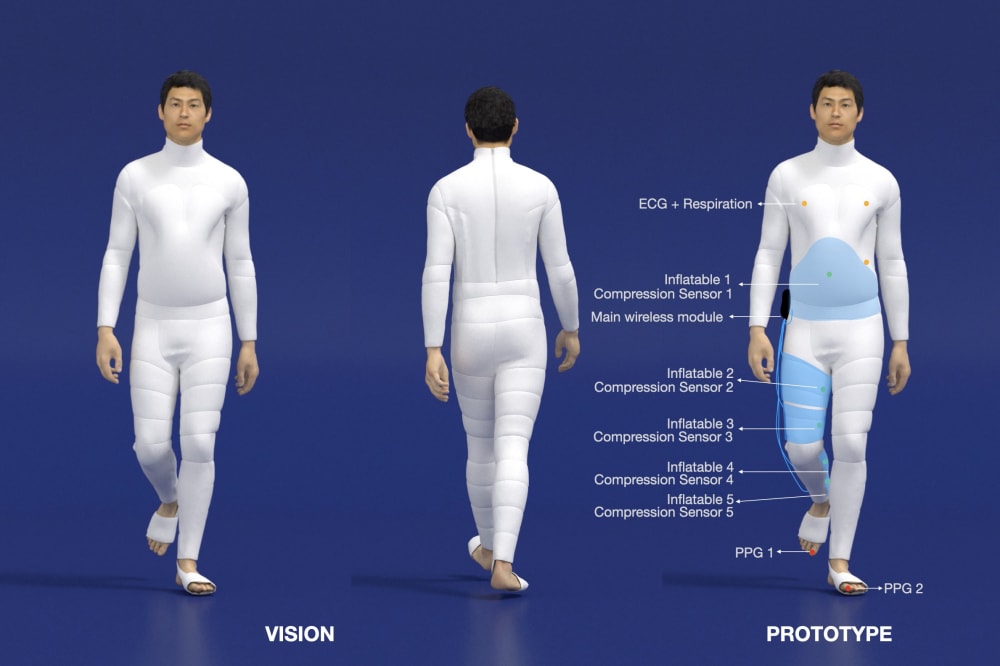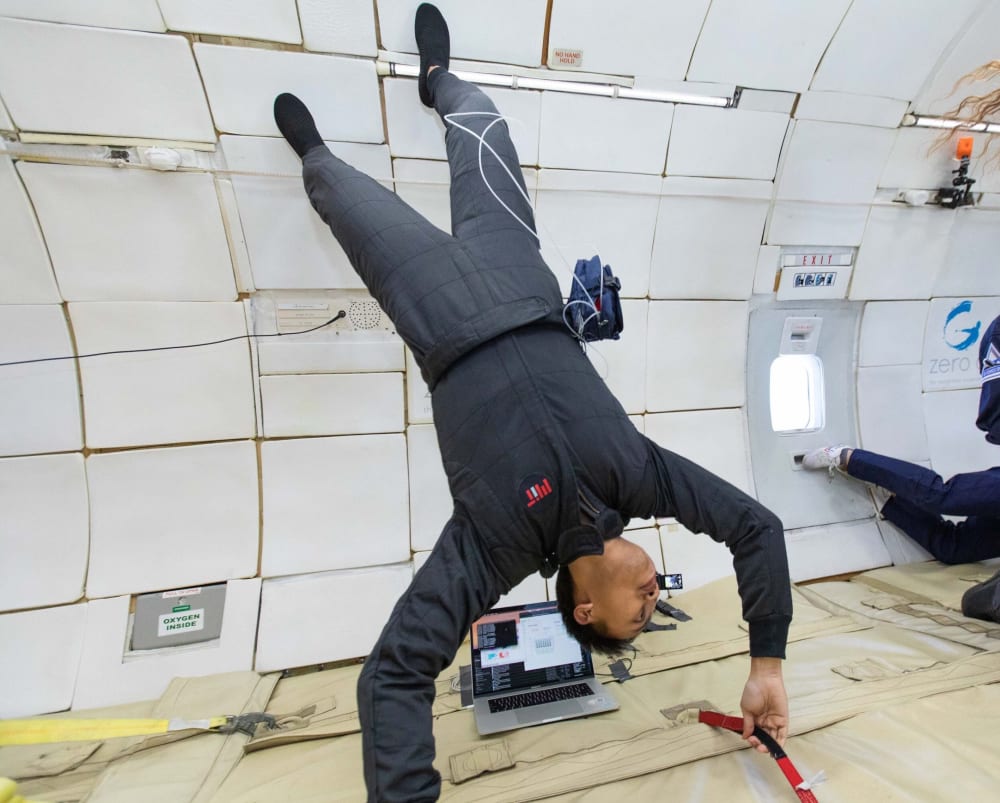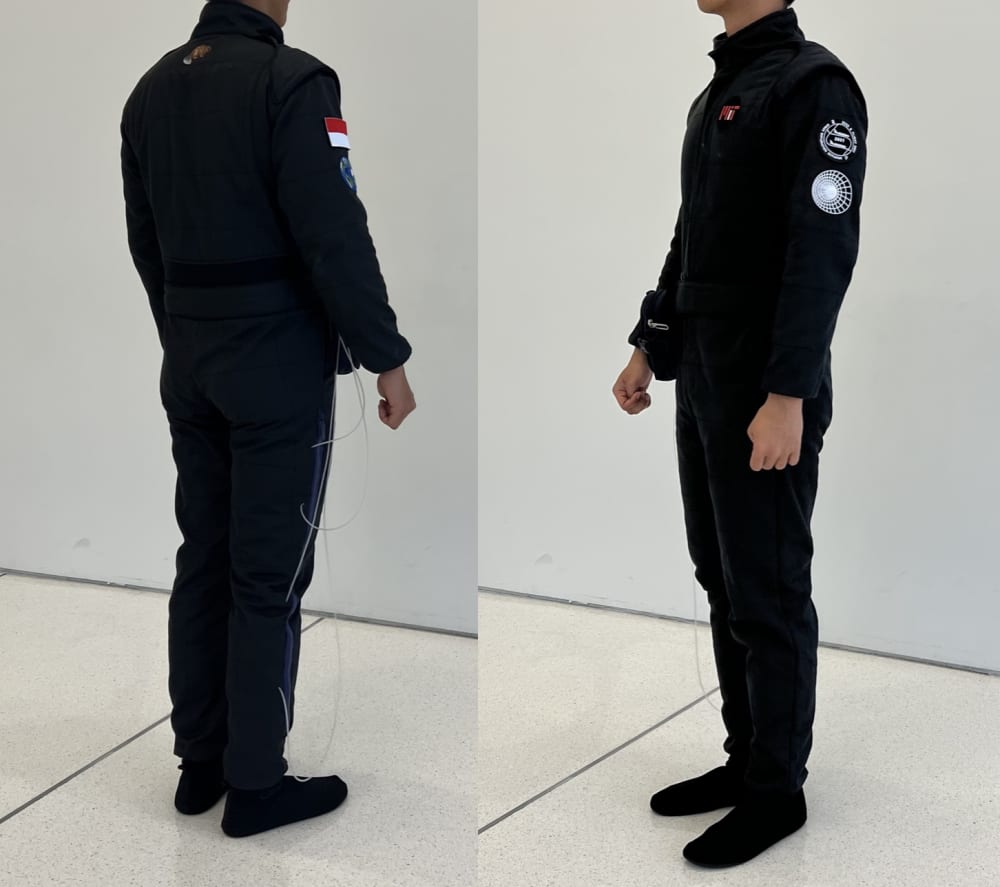
Prolonged exposure to microgravity is known to cause various acute health risks, including muscle atrophy, bone loss, cardiovascular deconditioning, and orthostatic intolerance. Due to the absence of gravitational force, bodily fluid hydrostatic pressure gradients vanish, and blood distribution shifts from the astronaut's legs toward their upper body. Consequently, it is imperative to provide continuous medical check-ups and interventions for astronauts and crewmembers throughout their long-term journey in outer space and also after their return to Earth.
To this end, inspired by the contraction and relaxation of muscles in the human gastrointestinal tract, we have developed Peristaltic Suit (PS-Suit) by embedding an array of soft, textile-based actuators and physical and physiological sensors into a full-body intra-vehicular activity (IVA) suit with miniaturized and wireless sensing-actuation physiological and pneumatic control hardware. Integrating physiological and physical sensing and pneumatic actuation systems in the PS-Suit (1) facilitates closed-loop and timely intervention for astronauts to regulate their cardiovascular dynamics and (2) enables researchers to study the direct influence of active-dynamic spatiotemporal compression in micro to hypergravity conditions on various cardiovascular and physiological markers.
The PS-Suit outer layer is adapted from a high-performance Nomex racing suit (Profox) with a combination of knitted Nomex around the joints for freedom of movements and a double-layer quilt-woven Nomex throughout. The seams were cut and tailored based on the wearer’s body circumferences through 3D photogrammetry and measurement. The materials of the fabric with the forms of the suit ensure the overall protective and compression functionality, mobility, and comfortability of the PS-Suit for IVA. The inner-layer consists of an array of five inflatable chambers integrated by sewing inner 4-way stretch fabrics and embedding free-standing TPU bladders and five piezoresistive-based textile pressure sensors.
The physiological and activity sensing module comprises a set of wireless skin-contact physiological modules to sense: 1) Heart rate and electrical activity of the heart through ECG signal, 2)Breathing rate and volume through ECG impedance sensing, 3) Blood flow and pulse-rate through the PPG signal, 4) Blood oxygen saturation through the PPG signals, 5) Skin temperature through the on-board pulse-oximetry temperature sensors, 6) Pulse-arrival time on each leg/toe through peak time-difference between ECG and PPG signals, and 7) Physical activity and gravity levels through the IMU data. All of these modules are embedded in multiple locations across the PS-Suit and connected to their central processing system with BLE-capability. Our pneumatic system (Flow.IO) consists of miniature motor pumps, circuits, and valves that can be wirelessly controlled through BLE and a microcontroller to control a set of five air chambers distributed throughout the PS-Suit. Both of the wireless and compact pneumatic and physiological sensing systems are stored in the pouch on the right side of PS-Suit.
We have tested and evaluated a functional prototype of the PS-Suit during a parabolic flight campaign to investigate the response of heart-rate and blood pulse arrival time to applied gradient compression and changes in gravitational force. Overall, the PS-Suit has potential applications to safeguard the health of astronauts, and eventually civilian space travelers during their time in the ISS and extended voyages to the moon, Mars, and perhaps beyond.
Video
-
Awards
-
 2023 Top 100 Entries
2023 Top 100 Entries
Like this entry?
-
About the Entrant
- Name:Irmandy Wicaksono
- Type of entry:teamTeam members:
- Ali Shtarbanov
- Esha Ranade
- Rebecca Slater
- Dava Newman
- Joseph Paradiso
- Patent status:none









